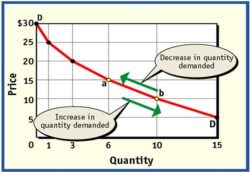May 11, 2017
The Postal Service reported huge, unexpected declines in the main categories of mail volume for its most recent quarter, January-March 2017. First Class Mail was down 4.2 percent or 674 million pieces. Marketing Mail usage was down 3.5 percent or 682 million items. These percentage volume declines are right in the ballpark of the price increases on single-piece First Class Mail and drop-shipped Marketing Mail. Periodicals Mail declined 3.7 percent or 51 million magazines. Periodicals have been whipsawed in recent rate cases with changes based on weight, editorial content, and usage of the Flats Sequencing System.
The quarter was book-ended by the inordinately large rate increases on work-shared Marketing Mail and single-piece First Class Mail in January, and the deadline for comments in the Postal Regulatory Commission regulatory rate review in March. Both of these events highlighted the large and growing uncertainty around postal rates, as well as the USPS desire to raise rates well above general inflation with little regulation.
It makes sense that demand for postal mail would decline, ceterus paribus, when prices go up and are expected to go up more. And when price uncertainty rises, demand usually suffers. In fact, in competitive markets, the demand curve is downward sloping, meaning that higher price means less demand.
Recently, USPS leaders have made contradictory statements. On the one hand, they say they operate in very competitive markets and do not have a monopoly, because there are many digital alternatives to hard-copy mail. On the other, they advocate higher pricing as the key solution to their problems, and grouse about the removal of the temporary exigent surcharge.
The postal management and union solution to price their way out of declining demand would only work if its customers were completely captive, unresponsive to higher prices, and the demand curve were flat and vertical.


Leave a Reply